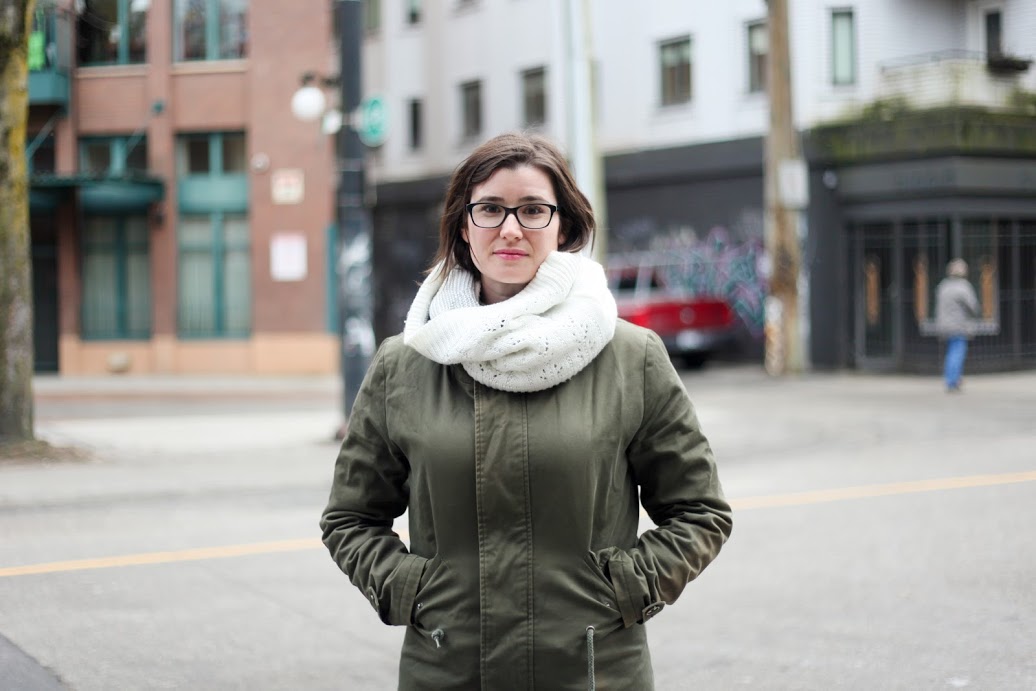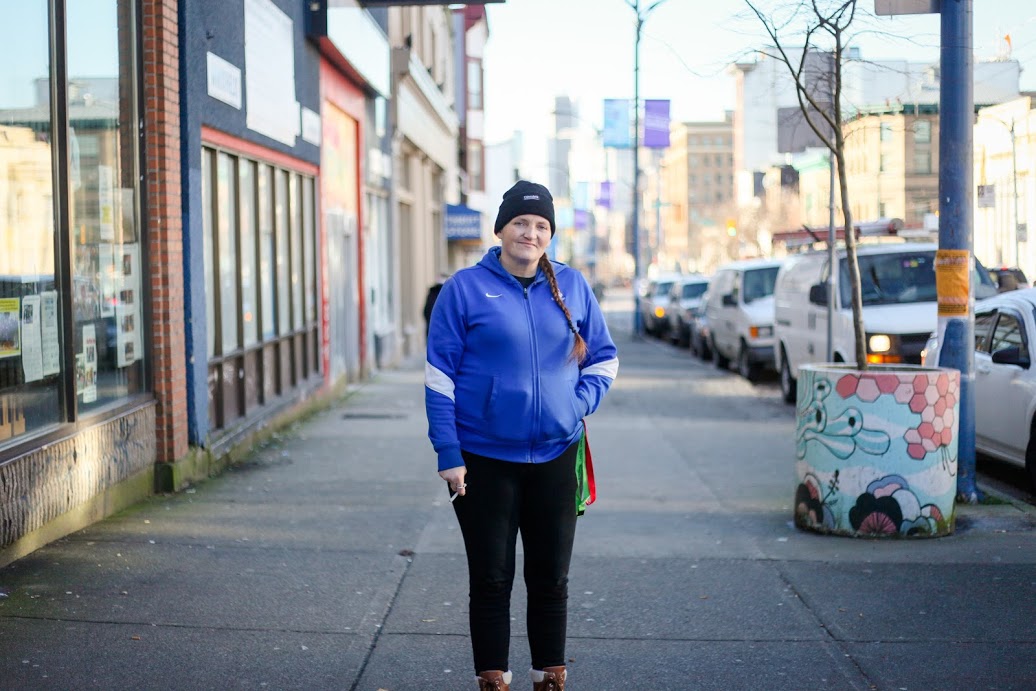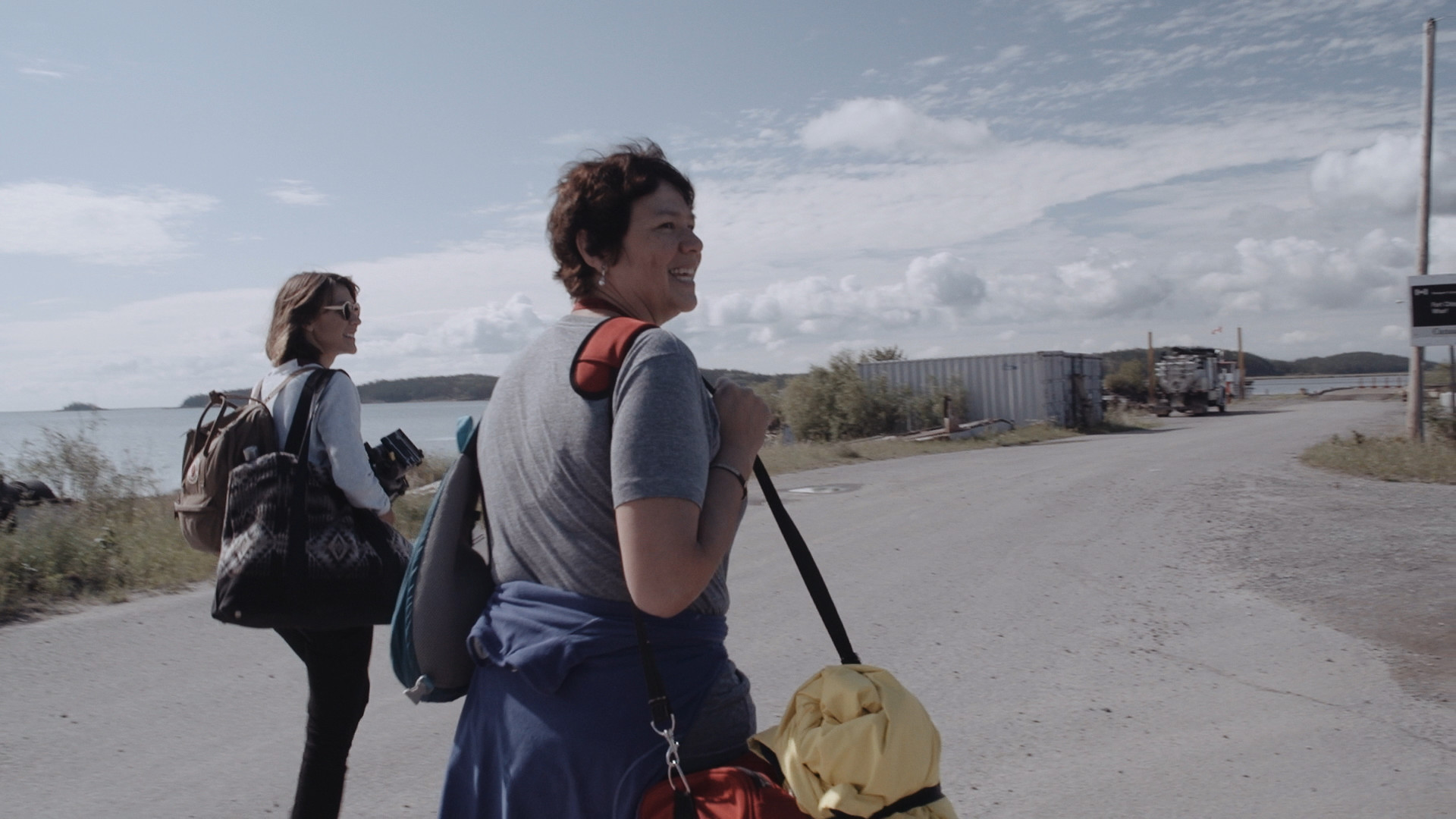Dr. Esther Tailfeathers remembers the August day she dealt with the first of what would become an epidemic of fentanyl-related overdoses in her home community, the Blood Tribe (Kainai) Reserve in southern Alberta.
The family physician and Cardston Hospital emergency room doctor stopped at the local Walmart that summer day to pick up some items for Kainai Nation’s sun dance.
“I parked next to a van. As I stopped the car and turned my car off, I could hear children screaming in the van right next to me,” she recalls. “I looked and I saw this driver slump over and fall out the door.”
The man, in his early twenties, wasn’t breathing. Tailfeathers pulled him onto the pavement, started CPR and called for help. After paramedics took him to the hospital, they found fentanyl, along with other drugs, in his blood.
“Fentanyl was the primary one,” Tailfeathers says.
He survived that day. But three or four overdoses later, he was dead.
The young man in the parking lot was the first of many overdoses Tailfeathers would encounter. That summer, overdose patients arriving in the emergency room at Cardston Hospital increased from one or two each week to two or three every day.
By March 2015, seven months after Tailfeathers struggled to help that young man, 18 people on the reserve, with just 4,680 residents, had died. (The Kainai Nation has 12,800 members, but many live off reserve.)
The numbers prompted the band council to declare a state of emergency. It was the first community to sound the alarm on the fentanyl crisis in Alberta.
“We had 18 young people die. And the last two deaths were a couple who left children behind,” Tailfeathers says.
The crisis just added to the grim statistics on Indigenous health.
“Our life expectancy as Indigenous people in Alberta is almost 12 years shorter than the average Albertan. And our infant mortality is twice the average Albertan mortality,” Tailfeathers says. “We need to address things on a community level like we are here, but we need to address our overall system and find out where we’re failing Indigenous people, because they’re dying much younger and much faster than the average population.”
A community turns the tide on overdose deaths
Blood Reserve was the first community to act publicly to deal with a fentanyl-related overdose crisis that killed more than 1,100 people in B.C. and Alberta last year.
Almost two years later, other large centres struggle to catch up. Toronto and Ottawa are now launching overdose prevention initiatives; this month the Ontario government announced that it would help pay for Toronto and Ottawa’s first supervised injection sites; health officials in B.C. announced new measures this month.
On Blood Reserve, however, much of that work is already in play. And the community’s response to its overdose crisis has started turning things around.
Tailfeathers estimates that fentanyl-related deaths in her community are down by a third since 2014 and 2015.
“We’re seeing some improvement,” she says. “The first line is to try to reduce the trauma in the community by reducing the number of deaths and the mortality in the community so children, at least, still have their parents.”
“The second thing is to return people to some sort of function so that they can get a home or a place for their families to stay and they can reunite the parents with the children so we’re not breaking up family units.”
The third piece, she says, is the hard part — “Trying to prevent trauma to their children.”
Members of the Kainai Nation acted quickly after declaring the public health emergency in March 2015. They started workshops so people could learn how to reverse opioid overdoses using naloxone and distributed naloxone kits in the community.
“We’re the only First Nations community in Alberta that has done that,” Tailfeathers says. “Narcan [the brand name for naloxone] is in homes in the community, and we’ve done a community wide distribution of Narcan kits to public spaces like schools, the major working places, and there should be a kit in most of the public working spaces on the reserve.”
They also started a far-reaching community educational initiative. “We started community marches, community meetings, and we came up with a strategy amongst our community members,” Tailfeathers says. “We’re currently working on aligning all of our treatment services.”
Tailfeathers is the only family doctor in the Stand Off (Blood Tribe) medical clinic who prescribes suboxone, a tablet form of buprenorphine and naloxone. It rapidly reduces opioid withdrawal symptoms and is intended to treat opioid dependence.
“Suboxone helps families get their homes back and get their children back,” Tailfeathers says. “We had a lot of child care issues where children were taken into custody because their parents were not parenting, they were chasing their addiction. So we flooded foster homes as well, because our children were being apprehended.”
The next goal for Kainai Nation is to build an after-care centre where people can stay for three to six months after going through treatment and receive mental health counselling, life skills training, and access to job readiness programs.
But the key to stemming the tide of overdoses will be addressing the systemic issues at the root of drug addiction, says Tailfeathers. A major issue is the lack of meaningful, sustaining employment opportunities, as tribal businesses are failing and there is no big industry, she says.
“In order to address our poverty issue, we need to address our self-sustenance,” she says. “We need to be sustaining our own population with work on-reserve and with agriculture and industry on-reserve that is environmentally friendly or we consider the stewardship of the land as important.”
Tailfeathers said the community looked hard for the roots of the crisis.
“Initially, we had thought the main reason for this epidemic in our community was we were seeing the intergenerational trauma from residential schools being resurrected,” she says.
But that’s not the main factor driving people, particularly young people, into addiction.
“We’re finding out that the number one social determinant for what we’re seeing with addictions in this community is poverty,” Tailfeathers says. This is true, she adds, in Indigenous communities beyond Blood Reserve.
Drug-substitution therapies critical for success
Tailfeathers supports treatment programs that provide replacement opioids to participants over more common abstinence-based models.
“People don’t quit if they go through an abstinence-based model. They need a gentle withdrawal because they’re human beings,” she says.
“They’re more likely to get their lives together, they’re more likely to have some sense of function and some sense of feeling more human if they’re treated more gently and with care, knowing that addiction is not something they choose,” she says.
“They don’t choose to live like this; the addiction causes them to live like this, and whatever led them to it in the first place needs to be treated.”
Addiction, Tailfeathers says, is a lifelong issue — not something that can be fixed by putting a family member on an expensive, month-long private residential program.
In B.C. yesterday, the coroner released its recommendations from an inquest into the death of 20-year-old Brandon Jansen, who died of a fentanyl overdose while in treatment in Powell River last March. “There are a number of issues in this death that actually represent a number of things that are occurring in other situations in the province,” says chief coroner Lisa Lapointe.
The coroner’s inquest jury released 21 recommendations for reducing the toll of illicit drug deaths, such as expanding treatments like the ones on offer through Vancouver’s Crosstown Clinic and explored in the second part of this series.
The jury also calls for improved access to suboxone, which Tailfeathers prescribes in her family clinic on Blood Tribe. It also urges the British Columbia Nurse Practitioner Association to ensure its membership is aware that suboxone is a first-line treatment for opioid use disorder, and that nurses understand the risks and benefits of suboxone relative to methadone. A liquid medicine for treating opioid addiction, methadone’s new formulation, MethaDose, has been known to put patients into withdrawal faster and has therefore led to relapses on heroin.
Like Jansen’s family, people on Blood Reserve initially responded to addiction in their families by sending them to residential treatment centres.
“We still were of the mind that abstinence was the end goal of getting treatment, or getting help was complete abstinence. We flooded the traditional treatment centres in Alberta with our people,” Tailfeathers remembers. “We found out that the traditional treatment methods were not helping people because they weren’t staying and they were relapsing.” Those events spurred a needed widespread reconsideration of how treatment works and what families should expect.
“Expectations are that their child or their family member has gone through treatment, and life is going to be the same and be better again. But no,” Tailfeathers says. “What we’ve found is that people don’t quit if they go through an abstinence-based model. They need a gentle withdrawal because they’re human beings.”
‘We can solve the fentanyl crisis. Absolutely’
Back in Vancouver, Dr. Christy Sutherland operates with a dignified gentleness that reminds me of Tailfeathers.
“Safety is the main thing I’m trying to give my patients,” says the medical director of PHS Community Services Society. She was part of the treatment guideline committee that contributed to a 2015 publication on managing opioid addiction from Vancouver Coastal Health and Providence Health Care.

Sutherland and her team of physicians and nurses work throughout the 1,175 units of supportive housing operated by PHS. Sutherland also brings a medical team to alleyways of the Downtown Eastside, where she offers suboxone, methadone, naloxone training and flu shots to people. She estimates that the medical team has about 1,900 patients.
“The thing with suboxone is it works so quickly. People go from being in excruciating withdrawal to feeling fine over the course of a couple of hours,” she says. By day two of the medication, she can get patients up to a therapeutic dose, which protects them from opiate overdoses. “It protects them from death, it protects them from HIV, and it decreases crime.”
Sutherland was previously required to apply for a federal exemption to prescribe suboxone and methadone to her patients. But in July, the College of Physicians and Surgeons of British Columbia, in collaboration with the health ministry, dropped the requirement in order to provide greater access to the drugs.
On Jan. 18, B.C. Health Minister Terry Lake announced that by Feb. 1 suboxone and methadone treatment would available at no cost for British Columbians earning $42,000 or less. “Anyone that qualifies for MSP assistance would qualify,” he said.
Sutherland continues to provide pioneering medical services in the Downtown Eastside. Since September, she has been providing injectable hydromorphone, known by the brand name Dilaudid, to one patient who was deep in the throes of illicit opioid addiction. Other treatment methods like suboxone and methadone weren’t working for her, so Sutherland applied to the federal non-insured health benefits program to have the drug costs covered.
The patient now visits the PHS medical clinic twice a day for an injection. “I was expecting it to be incredibly challenging. But she started the treatment and then got better. It was pretty easy,” Sutherland says. “The transformation with this person has been phenomenal. She’s just so happy now, living life.”
Sutherland’s patient is only the second person in North America outside a clinical trial to receive injectable hydromorphone. The only other patient not in a clinical trial has been receiving the drug through the nearby Crosstown Clinic, home of the injectable opioid assisted treatment program.
The clinic was also the treatment centre for pioneering SALOME and NAOMI clinical trials of therapies based on prescribing injectable replacement drugs.
“We’re so lucky in addiction medicine. The evidence is robust, and it really points us in the right direction for what works really well. So we just need to apply the evidence,” says Sutherland. “Then we can solve the fentanyl overdose crisis. Absolutely.”
Sutherland, like Dr. Scott MacDonald of Crosstown Clinic, wishes to expand the injectable hydromorphone program to reach more people. “Because I’ve had this patient who just got better so quickly, I want to do it again,” she says. Especially since so many of her patients are gripped by grief and fear as a result of the opioid crisis that has claimed the lives of their friends and family members.

Lots of announcements — but people are still dying
Blocks from where Sutherland works, a corkboard is covered with memorial notices for people who have died from drug overdoses at the headquarters of the Vancouver Area Network of Drug Users (VANDU). Laura Shaver, the 38-year-old president, knows many of them. She carries a naloxone kit in her purse and calls almost everybody sweetheart.
“People don’t decide one day, ‘Oh, okay, I’m gonna be a junkie,’” she says. “There are so many things that lead into it. Not having proper housing, not having all these different things, are some of the reasons people try to numb. The other is, especially here in Vancouver, not being able to get proper opiate pain medication.”
The deep pain — physical and emotional — that drives opiate addiction isn’t going to suddenly disappear, she says. But she knows what works to help people get better.
“The people that are on the assisted heroin program are doing very, very well. Their quality of life has changed. A lot of them have more stable housing. They’re not in jail anymore. They’re healthier,” she says.
It’s close to noon on a cold, bright Tuesday in mid-December. That morning, Shaver watched helplessly as someone died of an overdose in the alley down the block. Despite overlapping announcements of action by all three levels of government, people are still dying.
“There’s something wrong,” she says. “There’s still not enough.”
“The person who died was in the alley of the Washington Needle Depot, the hub where the Spikes on Bikes [a bicycling team of volunteers equipped with naloxone kits to reverse opioid overdoses] are, and two doors away from Insite,” she says.
“Even though these things have been put in place, the OD deaths are still going up.”
Shaver wishes more people understood the far-reaching nature of addiction, and how many people suffer through it silently. “People need to realize that it’s your brother, your sister, your mom, your dad, your teacher,” she says.
“It’s affecting the whole community, as in the whole province. Not just the Downtown Eastside.” ![]()
Read more: Indigenous, Health, Rights + Justice


















Tyee Commenting Guidelines
Comments that violate guidelines risk being deleted, and violations may result in a temporary or permanent user ban. Maintain the spirit of good conversation to stay in the discussion.
*Please note The Tyee is not a forum for spreading misinformation about COVID-19, denying its existence or minimizing its risk to public health.
Do:
Do not: